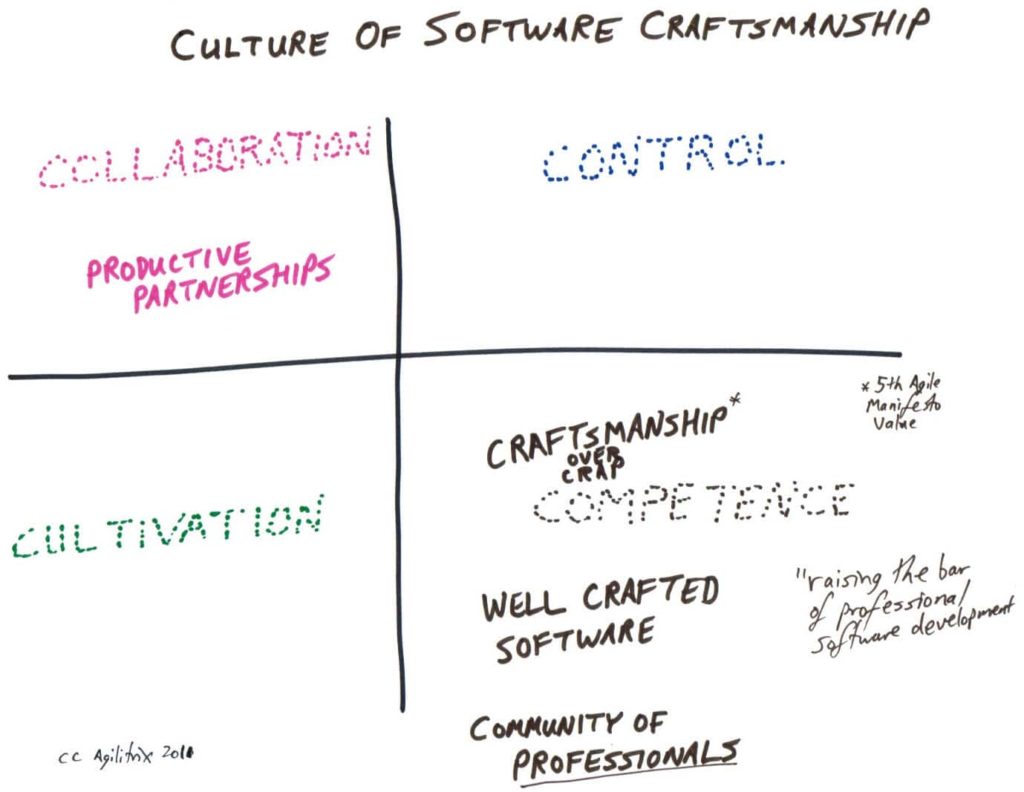The rise of anemic Scrum was noted to dismay among the Agile community and in particular by “Uncle Bob” Martin who coined the fifth Agile manifesto value of Craftsmanship over Crap(Execution). This gave rise to the much needed community of Software Craftsmanship.
Looking at an earlier post – Agile is about Collaboration and Cultivation Culture – it is clear that the Agile community was not addressing the Competence Culture. And we as a community of software professionals do need to pay attention to competence and technical excellence for long term sustainability. Uncle Bob recently wrote a good article on this topic – The Land that Scrum Forgot.
Cultural View of the Manifesto for Software Craftsmanship
The diagram below relates parts of the craftsmanship manifesto to cultures identified in the Schneider cultural model.

Not surprisingly, there is a big focus on Competence Culture. This culture is focussed achieving success by being the best. And craftsmanship is about being the best software developers possible.
The value of productive partnerships stands alone. I am curious as to what purpose this supports as it is not directly related to writing quality software. I am wondering whether:
- this exists as a bridge to the Agile community?
- is related to the strong XP practice of pairing?
- is intended to appeal to the need for mentorship?
So what?
Craftsmanship needs to exist to make sure that the technical practices promoted by XP don’t get lost in fluffy bunny Agile culture. Things like: refactor mercilessly, do the simplest thing that could possibly work, TDD, ATDD, continuous integration, continuous deployment, shared code ownership, clean code, etc.
The existence of a separate movement to support competence culture that exists outside of the Agile, supports the assessment of Agile culture as focussed on Collaboration and Cultivation.
Caveats
I think that Craftsmanship is a good thing. I also believe it is complementary to Agile.
This is post is about understanding how Craftsmanship fits with Agile and company culture.


